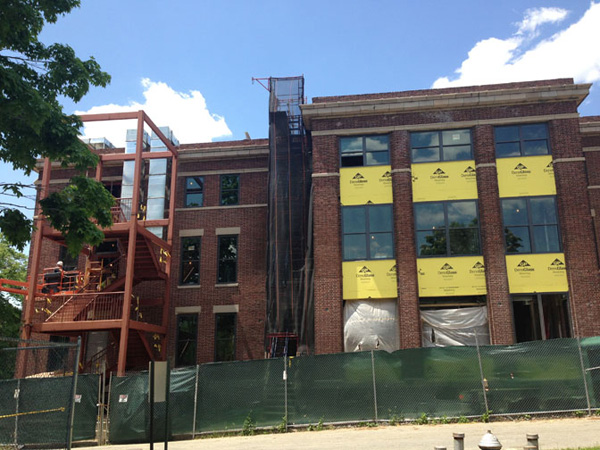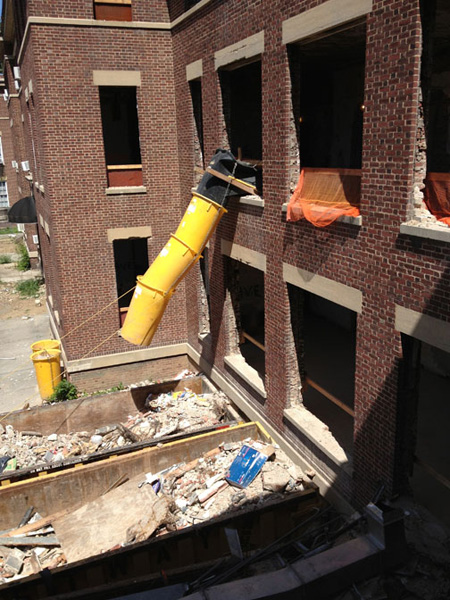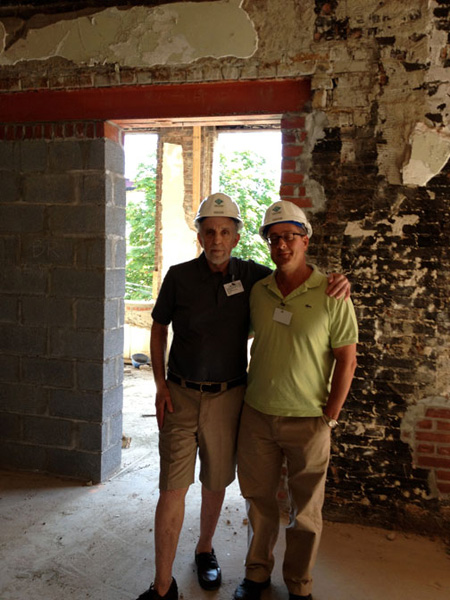FEATURE by
George Rosenfeld
Odyssey House was founded as a drug rehabilitation center in 1966 by Dr.
Judianne Densen-Gerber. I joined the Board of Trustees in 1997. When the
Chair stepped down in 2002 I was elected to succeed her. I served in that
position and as Chair of The Odyssey House Foundation until I retired
as Chair of the Board in 2012. I have stayed on as leader of the Foundation
and as an active Board member.
Around 1998,
I arranged for financing from a family foundation to begin a pilot program
at Odyssey House for an elder care initiative servicing the needs of substance-abusing
clients of age 55 or older. The plan was to use these donated funds as
seed money to start a program for this underserved population with the
hope that New York State would recognize the efficacy of such an effort
and would agree to fund it as part of its general financing of rehabilitation
programs. That in fact happened. The program began with 15 participants
and is upward of 90 today. We believe the Odyssey House Elder Care effort
is unique in the country.

When I first joined the Odyssey Board I took a tour of its facilities.
One in particular, on Randall's Island overlooking the East River, caught
my attention. A very old building called the MABON housed about 125 clients.
The facility served as the first stop for entering patients, some of whom
remained there for the length of their Odyssey House experience; others
moved on to one of our other facilities. Generally, women who came to
us pregnant would stay at the MABON, give birth at a local hospital and
return to the center with their children until their therapy was completed.
The mothers
and children segment is an interesting aspect of the Odyssey House treatment
paradigm. Many of these women came to us mandated by the courts. That
is to say, the judge would offer treatment at Odyssey House to some women
as an alternative to incarceration. If the woman agreed, she would have
a shared room and have her child sleeping in a bed next to her. During
the day, while she was in therapy, her child would be in the care of trained
personnel (older children, up to the age of five, would be in daycare
or enrolled in a Head Start-type program). The importance of this option
is that the mothers probably would not have agreed to enter rehab with
us unless their young children could be with them. The mothers would likely
refuse rehab, fearing that their children would be cast into the foster
care system and all that that threatens.

The MABON building, old and sagging a bit, was built around 1900. One
half of it
housed a clinic where NYC’s Department of Health performed prefrontal
lobotomies on patients suffering from mental conditions such as bi-polarity,
depression, and schizophrenia. That section of the building was called
"The Annex" and was in total shambles. Odyssey House occupied
the other half, where it ran the mothers and children program and housed
some adult male clients. The building was made of brick and mortar and
was heated by ConEd steam. It was a bit shabby but it seemed to work as
a facility. I started a love affair with the MABON.
My dream
was that one day the Office of Mental Health (in Albany) would give us
the building and enough money to modernize it. We put the dream on the
back burner letting it simmer as we continued to talk to state officials
from the Office of Alcoholism and Substance Abuse Services about the needs
of vulnerable New Yorkers for intensive residential treatment. Finally,
in 2011, we were given the green light to go ahead and begin this major
renovation project to the tune of $26 million.

Five years later the project is near completion. The reconditioned building
has all new everything: the architects and engineers have effected a miracle.
Soon there will be more than 200 recovering substance abusers in treatment
there in residence — mothers and their children, the elder care cohort,
and a young women's group. We think the three segments will mingle and
be cohesive in a safe setting with a view of the water and surrounded
by green space.
The former MABON is being renamed the George Rosenfeld Center for Recovery.
